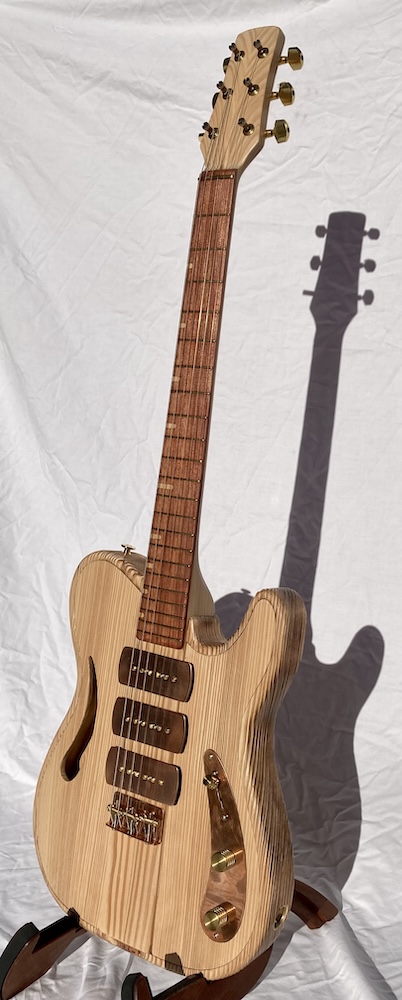Latest
Some of the following items could be available for sale.
LârzeTripppleCaster
My most handmade guitar: neck, body, plates, nut… Three matched P90 pickups from Fralin. Copper and brass hardware with a natural or slightly burned wood color.

LârzeNeckThrough
My second handmade neck semi-hollow body guitar. Natural color with a wax-varnish mix finish. Hot P90s with Gibson like controls.

LârzeToonDeluxe
My second amp kit: a cartoonish Fender Tweed Deluxe with mods (negative feedback and master volume). All lightly brushed larch cabinet and oil finish.

About PexGuitars
Hobbies come together
I have always enjoyed woodworking since being a teenager but I would normally be making furniture. Music has always been an essential part of my life but even more so since I seriously started to learn how to play drums, and then guitar, more than ten years ago…
So it is only natural that the two finally came together in the making of guitars. I started the easy way, ordering finished necks and just having fun designing and building the bodies, trying to create original models.
However this has been so enjoyable, mostly for the learning of the craft, that I started making my own guitar necks, inching closer to luthiery.
Lârze
This was the old dialect word for larch (mélèze in nowadays French) in some lateral valleys in the state of Valais. Larch is a deciduous conifer found in high altitude forests which looses its needles in autumn, but not before offering us golden colors bursts. Its wood will not rot (or extremely slowly when touching the ground) so it has been used for ages building the ancient houses (mayens) and granaries (raccards) in the mountains.
My initial dream idea was to make a guitar body with this wood and leave it outside for a few years to age like it does in the rain and sunshine. This will remain a dream for the moment. But using larch for guitar making has the advantage that the grain alternates between hard and soft layers (latewood/earlywood), making it well suited for brush finishes. The two layers also have different colors, enhancing the grain visibility. On the other hand, this makes it difficult to shape flat and smooth surfaces like the back of a guitar neck should be.
Handmade
The early builds were mostly made using carpentry power tools. But with time I moved back to hand tools to shape the bodies and the necks. It is a real pleasure to watch and feel the desired shape materialize using rasps, files and scrapers.
Similarly, I am moving away from screwed necks to set necks, avoiding any plastic control plates and making my own metallic control plates as necessary.



